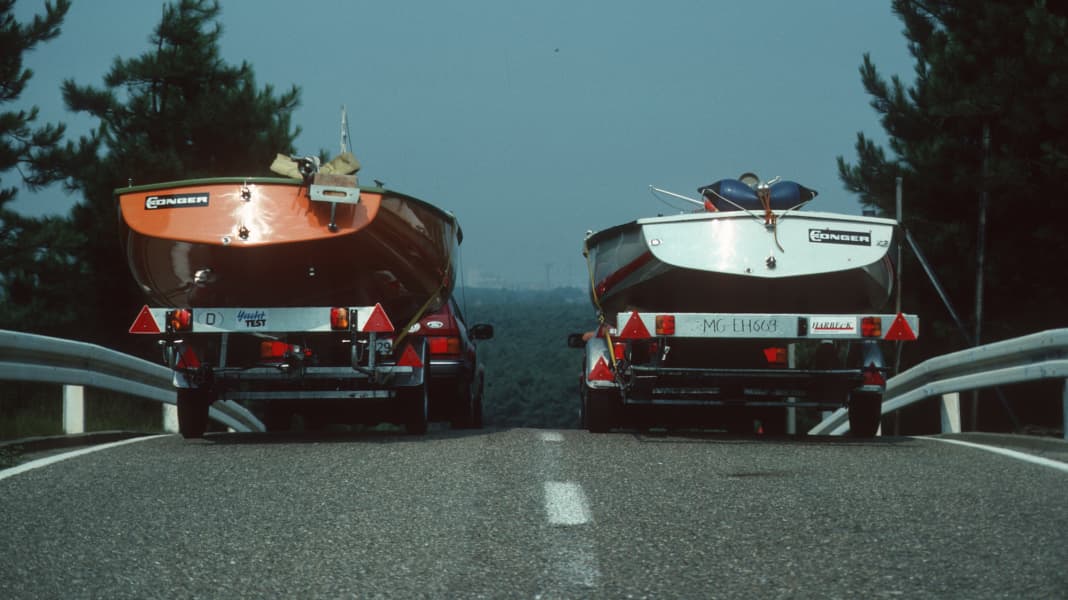
- Travelling faster with a 100 badge
- Speed limits
- What do I need to know about my driving licence?
- What labelling of the load is necessary?
- Does the trailer also have to be inspected?
- How much weight can be attached?
- What are the maximum dimensions of the trailer?
- Is the trailer also insured?
Travelling faster with a 100 badge
With a little conversion work and an appropriate towing vehicle, it is possible to travel at 100 kilometres per hour on motorways and motorways instead of the 80 kilometres per hour prescribed in Germany. The aim is not to arrive faster; the pure time saving is secondary. Rather, the increased speed contributes to safety. Slow lorries can be overtaken more quickly without the risk of falling into a speed trap at that very moment. It is also easier to keep up with the flow of traffic. In addition, other road users are not tempted into reckless overtaking manoeuvres on single-lane motorways. But be careful: country roads or main roads are not automatically motorways. These are labelled accordingly.
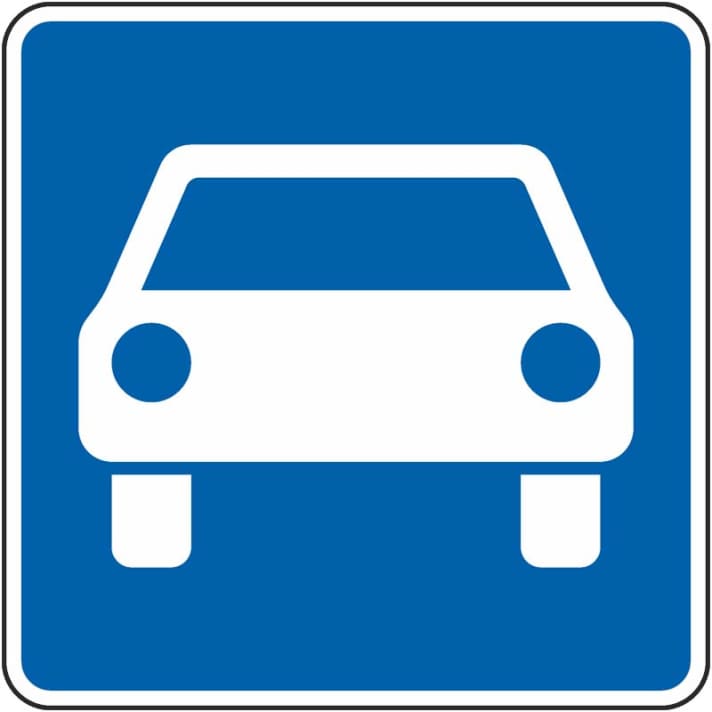
The requirements for the towing vehicle
The permissible total weight must not exceed 3.5 tonnes and it must be equipped with an anti-lock braking system (ABS). Requirements for the trailer: The tyres must not be older than six years and must be at least speed class L (= 120 km/h). If the trailer is braked, it must be fitted with hydraulic shock absorbers. Retrofitting costs between 50 and 250 euros, depending on the preparation of the trailer.
The requirements for the trailer
They are based on the unladen weight of the towing vehicle, which is multiplied by a factor of X, as well as other equipment features. An unbraked trailer has a factor of 0.3, which means that a towing vehicle with an unladen weight of 1.6 tonnes can tow a trailer with a gross vehicle weight rating of 480 kilograms.
A braked trailer with shock absorbers has a factor of 1.1. If the trailer has a coupling with sway damping or another dynamic stabilisation system or if the towing vehicle is equipped with a stabilisation system for trailer operation (ESP) that works up to 120 km/h, the factor increases to 1.2. The towing vehicle weighing 1,600 kilograms should therefore be able to tow 1,920 kilograms at 100 km/h.
However, the maximum authorised mass of the trailer must not exceed the maximum authorised towing capacity of the towing vehicle. In addition, the maximum authorised mass of the trailer must not exceed the maximum authorised mass of the towing vehicle.
However, if all requirements are met, the 100 licence plate may not simply be attached to the trailer. It must bear the official seal of the registration office.
It is best to ask your trailer manufacturer. They can also issue a manufacturer's certificate, in which case the trailer does not have to go to the test centre. If you carry out conversions yourself or if there is no manufacturer's certificate, there is no way around the test centre. They will also advise you in advance. The final step is to go to the registration centre. The 100 km/h plate is also available there.
This article is part of a trailer special:
Speed limits
Transport policy is a national matter - which is why there are no standardised speed limits for caravans within Europe. The 100 km/h speed limit, for example, only applies in Germany. In some cases, however, it is still permitted to drive faster than 80 km/h abroad.
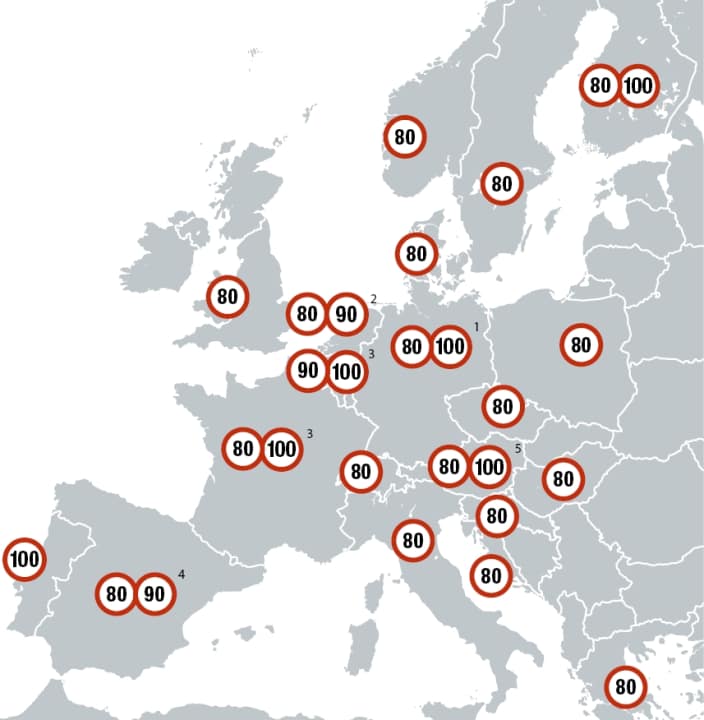
What do I need to know about my driving licence?
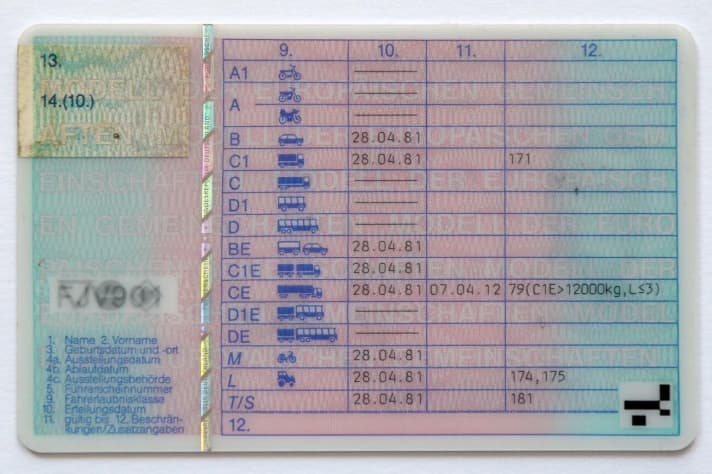
All driving licence holders are permitted to tow trailers with a gross vehicle weight of up to 750 kilograms, provided that the towing vehicle is approved for this purpose. For higher trailer loads, the date of the driving licence is decisive.
Old driving licence with class 3
Tractors up to 7,500 kilograms with no more than three axles are permitted, whereby an axle spacing of less than one metre counts as one axle. This means that a boat trailer may also be towed. The only limit is the permissible trailer load of the towing vehicle.
Driving licences from 1. 1. 1999 with driving licence category B
Motor vehicles with a maximum authorised mass of up to 3,500 kilograms with a trailer of up to 750 kilograms or with a trailer of over 750 kilograms are permitted, provided the maximum authorised mass of the combination does not exceed 3,500 kilograms.
Driving licence category B96
For heavier trailers, it is possible to take a driver training course in accordance with B96. This covers all trailers with a maximum permissible mass of over 750 kilograms behind a category B vehicle, provided the maximum permissible mass of the vehicle combination does not exceed 4,250 kilograms.
Driving licence category BE
Even heavier trailers require a category BE driving licence. The permissible total mass of the trailer is limited to 3,500 kilograms. If you want to tow trailers with a category B towing vehicle, you need a category C1E driving licence.
What labelling of the load is necessary?
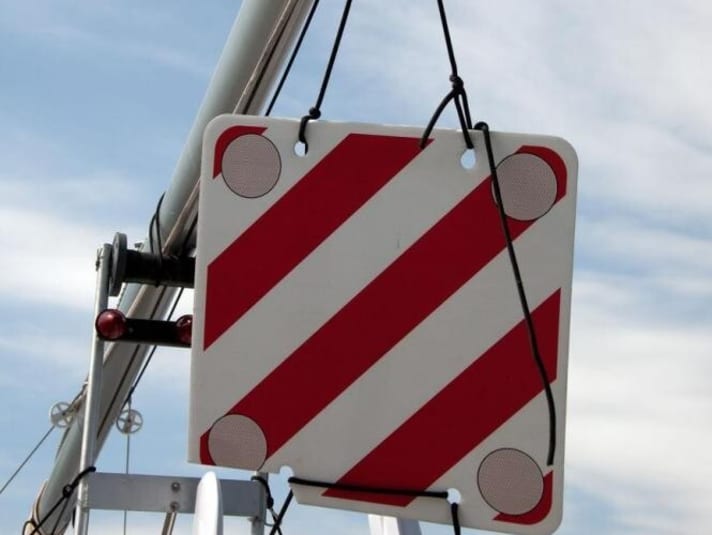
The load may protrude a maximum of 1.5 metres beyond the reflectors, and up to three metres for distances of less than 100 kilometres. If it protrudes more than one metre, it must be marked. This marking must not be placed higher than 1.5 metres above the road and must look as follows: a bright red flag measuring no less than 30 by 30 centimetres and held apart by a crossbar, or a bright red sign of the same size suspended transversely to the direction of travel, or a vertically mounted cylindrical body of the same colour and height with a diameter of at least 35 centimetres.
A bright red light should be fitted in the dark. If the load protrudes laterally more than 40 centimetres beyond the trailer lights, it must also be marked with a light. Special regulations apply in some European countries.
Does the trailer also have to be inspected?

Boat trailers are exempt from registration if they are used exclusively for transporting sports equipment. They are also exempt from vehicle tax, but must have their own green licence plate, which must be applied for at the tax office and is issued by the registration office; a follow-on licence plate for the towing vehicle is not (or no longer) sufficient. In order for the licence plate to be issued, the trailer must be approved by an inspection body such as Tüv or Dekra. This main inspection is due every two years, but can also result in costs due to subsequent improvements. To be carried when trailering are the trailer operating licence, the test report from the test centre and the certificate from the registration office.
How much weight can be attached?
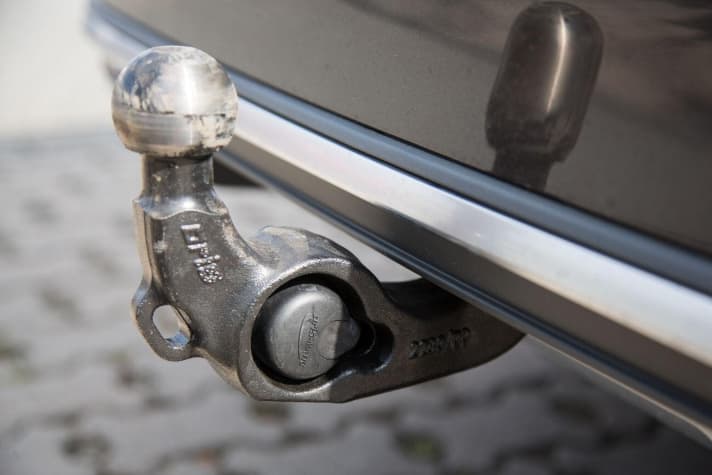
The upper limit for all passenger cars is 3.5 tonnes towing capacity; the trailer and its load may not be heavier. In addition, the towing capacity of a passenger car may not exceed its maximum authorised mass. However, how high the trailer load may actually be for the respective vehicle depends on the manufacturer's specifications and is dependent on the design of the trailer coupling and whether the trailer is braked or unbraked. The easiest way to find out is to take a look at the vehicle documents. In the registration certificate, the permissible braked trailer load can be found under point O.1 and the unbraked trailer load under point O.2.
In older vehicle licences, this information can be found under points 28 for trailers with brakes and 29 for trailers without brakes. In the case of off-road vehicles or SUVs, the trailer load may increase under certain conditions, such as all-wheel drive and a powerful engine.
What are the maximum dimensions of the trailer?
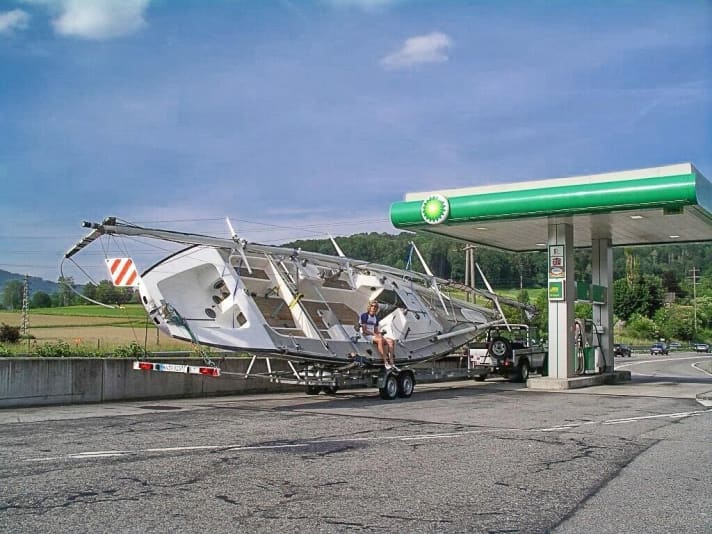
The following generally applies in Europe: Maximum width of the trailer with load 2.55 metres, length with drawbar 12.00 metres, length of the combination 18.75 metres, in Germany 18 metres, with load overhang
(e.g. mast) 20.75 metres.
The height is limited to four metres. Other dimensions apply in some countries, but trailers authorised and permissibly loaded in Germany may also be used abroad, in some cases a special permit is possible. If the dimensions exceed these limits, a special licence must be obtained from the competent authorities in the respective country.
Is the trailer also insured?
There is no compulsory insurance for boat trailers. However, the insurance of the towing vehicle only covers damage caused by a trailer that is connected to the towing vehicle or detaches from it during use and is still in motion. This means that if the trailer is parked and then becomes independent - for example, if the parking area is sloping - personal injury or property damage is no longer covered by motor vehicle liability insurance. However, some insurance providers include this case in the boat liability insurance, which every owner should have anyway. However, a separate contract can also be taken out.

